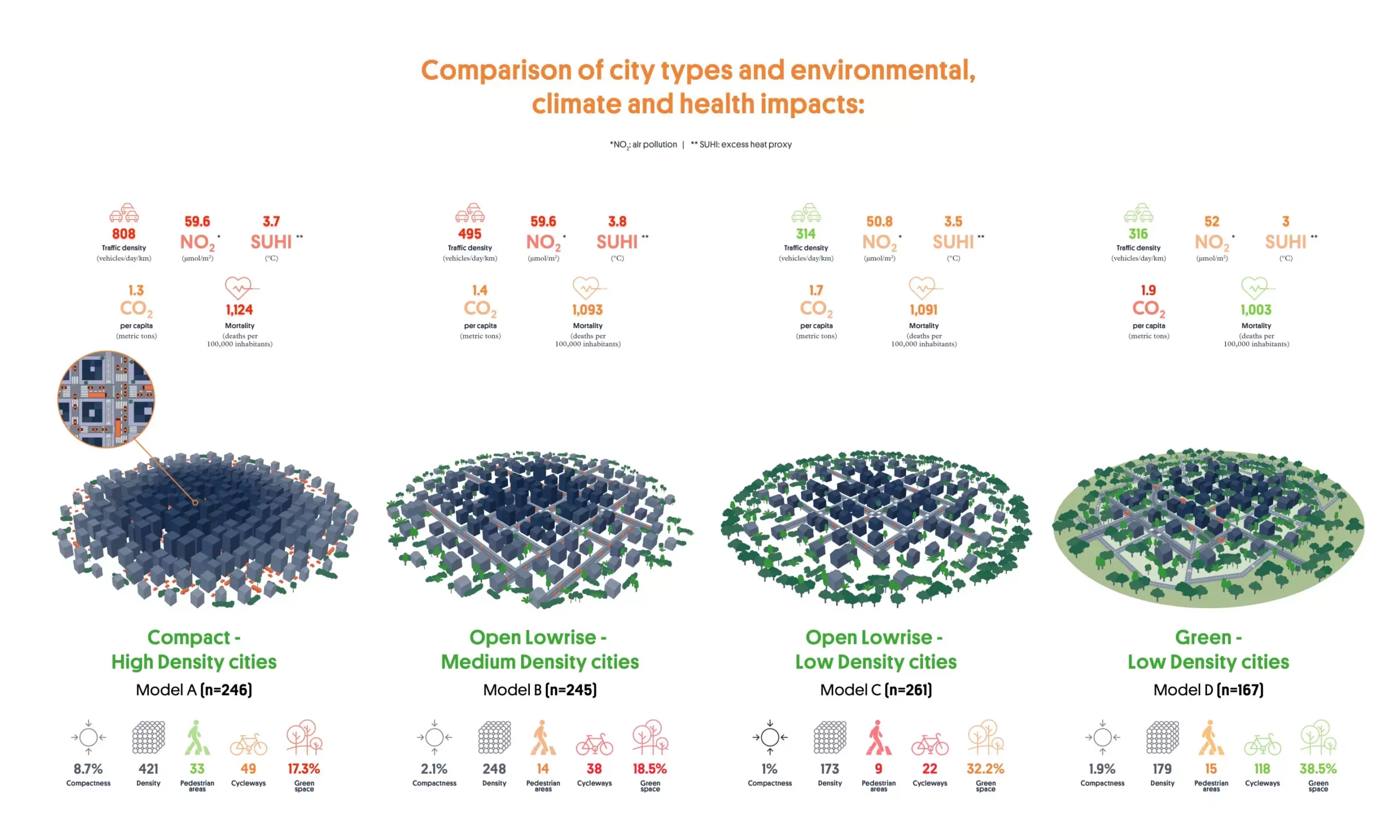When it comes to environmental quality, human health, and carbon footprint, the type of city in which individuals reside plays a crucial role. A recent study led by the Barcelona Institute for Global Health (ISGlobal) analyzed 919 European cities to identify four basic urban configurations on the continent: compact-high density cities, open lowrise-medium density cities, open lowrise-low density cities, and green-low density cities. The findings of this research, published in The Lancet Planetary Health, shed light on the advantages and disadvantages of each urban typology in terms of mortality rates, air pollution levels, urban heat island effect, and carbon footprint per capita.
Compact-high density cities, characterized by small surface areas and high population densities, are home to more than 68 million people in Europe. Cities like Barcelona, Milan, Paris, and Basel fall under this category. While these cities promote short-distance mobility with dense public transport networks and infrastructure for walking and cycling, they also have higher mortality rates, poorer air quality, and a stronger urban heat island effect. One of the key advantages of compact cities is their energy efficiency, leading to lower CO2 emissions per capita.
Cities such as Brussels, Dublin, and Leipzig belong to the category of open lowrise-medium density cities. These cities have small surface areas, medium population densities, and a relatively higher density of roads for motorized traffic. While they provide intermediate availability of pedestrian areas, cycleways, and green spaces, they also exhibit higher motorized traffic flows, resulting in increased exposure to air pollution and the urban heat island effect.
Open lowrise-low density cities, exemplified by cities like Pisa, Oviedo, and Toulouse, occupy larger surface areas with lower population densities. These cities have fewer pedestrian areas and cycleways but offer moderate to high availability of green spaces towards the outskirts. Despite their spacious layout, these cities face challenges related to longer commutes and less energy efficiency.
The low-density green city model, seen in cities like Helsinki, Rennes, Aarhus, and Stockholm, boasts a large surface area with low population density. These sprawled cities offer moderate availability of pedestrian areas and high availability of cycleways and natural green spaces. While they have the advantage of lower urban heat island effect and air pollution levels, their sprawled nature leads to longer commutes and higher carbon footprints per capita.
Analysis and Recommendations
The study highlights the trade-offs associated with each urban typology in terms of human health, environmental quality, and carbon footprint. Compact-high density cities show promise in promoting short-distance mobility and energy efficiency but struggle with air pollution and lack of green spaces. Open lowrise-medium density cities face challenges with increased traffic flows and exposure to pollutants. Open lowrise-low density cities may offer more space but at the cost of longer commutes and energy inefficiency. Green-low density cities provide a healthier environment but require innovative solutions to reduce carbon footprints.
It is evident that there is no one-size-fits-all solution for urban planning. Each city must conduct specific studies based on its unique characteristics to design optimal models for health, environmental quality, and carbon footprint. Innovative approaches such as superblocks, low-traffic neighborhoods, and nature-based solutions like planting trees and green roofs are essential to promote sustainable urban development. It is crucial to reduce car dependency and promote active and public transportation to create healthier and more sustainable cities for future generations.


Leave a Reply